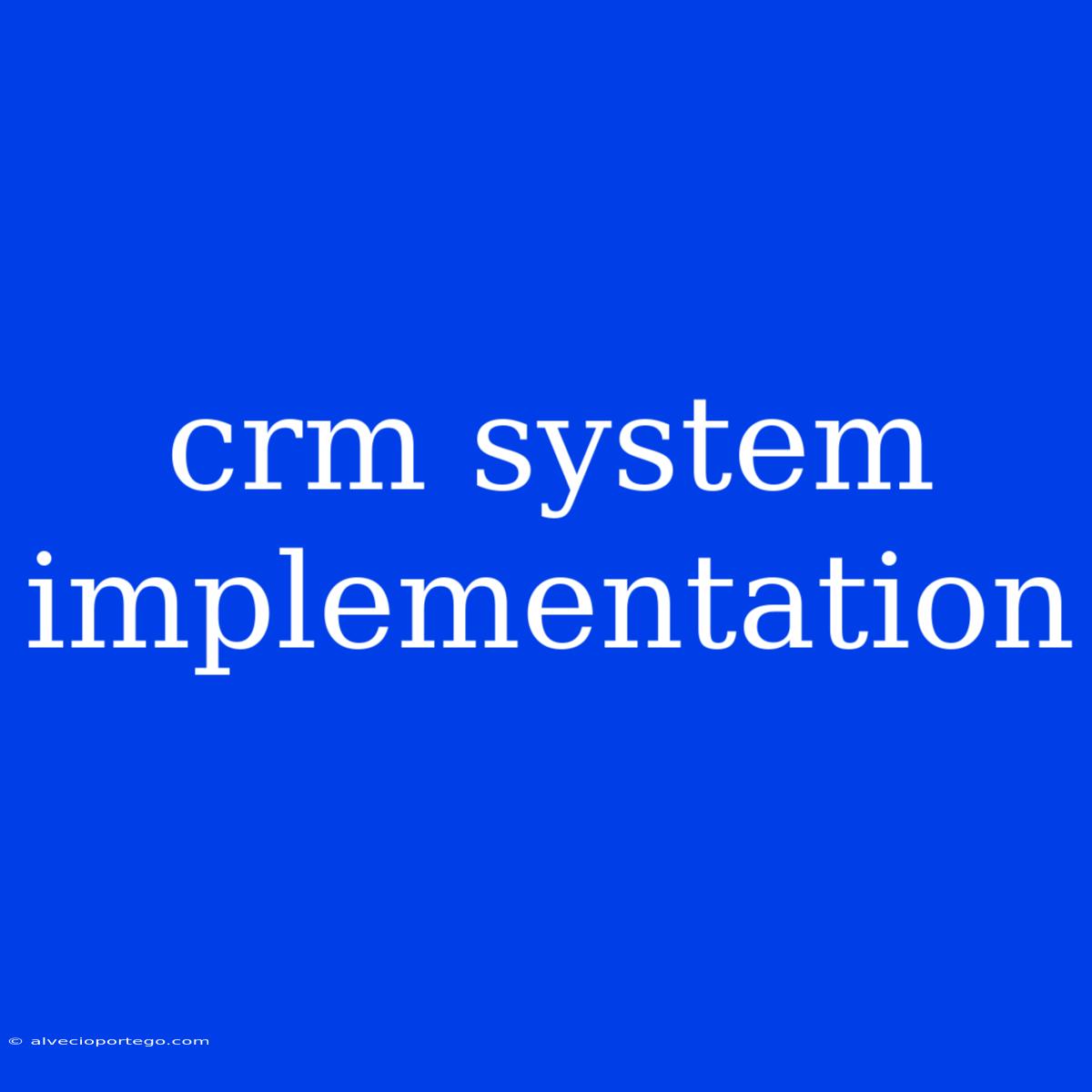CRM System Implementation: A Guide to Success
A Customer Relationship Management (CRM) system is a powerful tool for businesses of all sizes. It allows you to manage your interactions with customers, track their data, and improve your customer service. But implementing a CRM system is not a simple task. It requires careful planning, execution, and ongoing maintenance.
This article will provide a comprehensive guide to successful CRM system implementation, covering crucial stages from initial planning to long-term success.
1. Define Your Goals and Requirements
Before you even start looking at CRM systems, you need to define your goals and requirements. What do you want to achieve with a CRM?
Some common goals include:
- Improved customer service: This could involve faster response times, personalized interactions, and more efficient problem-solving.
- Increased sales: A CRM can help you identify leads, track opportunities, and close deals more effectively.
- Enhanced marketing efforts: You can use a CRM to segment your customers, target them with relevant messages, and measure the effectiveness of your campaigns.
- Better data management: A CRM can help you centralize your customer data, making it easier to access and analyze.
Once you know your goals, you can start to define your requirements:
- What features are essential?
- What data do you need to track?
- How many users will need access to the system?
- What is your budget?
2. Choose the Right CRM System
There are many different CRM systems on the market. The best one for your business will depend on your specific needs and requirements.
Consider factors like:
- Price: How much can you afford to spend?
- Features: Does the system have all the features you need?
- Ease of use: Is the system user-friendly for your team?
- Scalability: Can the system grow with your business?
- Integration: Can the system integrate with your other business applications?
Do your research and compare different CRM systems before making a decision. You can also get demos from vendors to see the systems in action.
3. Plan the Implementation
Once you have chosen a CRM system, it's time to plan the implementation. This involves several steps:
- Define the scope of the project: What parts of your business will be affected by the CRM implementation?
- Create a timeline: When will you start and finish the implementation?
- Assign roles and responsibilities: Who will be responsible for different aspects of the implementation?
- Develop a training plan: How will you train your employees on how to use the new system?
- Prepare your data: Ensure your customer data is clean, accurate, and ready to be imported into the CRM.
4. Implement the System
Once your plan is in place, you can start implementing the CRM system. This process includes:
- Installing the system: This may involve software installation, cloud configuration, or setting up a hosted environment.
- Configuring the system: This involves customizing the CRM to meet your specific needs, setting up workflows, and defining reporting dashboards.
- Importing data: Transferring your existing customer data into the CRM system.
- Training employees: Conducting comprehensive training on the CRM system, ensuring user adoption, and maximizing its use.
- Testing and refining: Thoroughly testing the system to ensure it's working correctly and making necessary adjustments as needed.
5. Go Live and Optimize
After the initial implementation, it’s time to launch the CRM system.
- Gather feedback: Encourage employees and stakeholders to provide feedback and identify areas for improvement.
- Continuously monitor and optimize: Keep track of how the CRM is performing, make necessary adjustments, and identify new opportunities for improvement.
6. Long-Term Success
Implementing a CRM system is not a one-time event. You must continue to maintain and optimize it to ensure its long-term success.
Key factors for long-term success include:
- User adoption: Encourage regular use by all employees who interact with customers.
- Data accuracy: Ensure your customer data is up-to-date and accurate.
- Process improvements: Use the CRM to identify and improve business processes.
- Regular evaluation and adjustments: Regularly evaluate the effectiveness of the CRM and make necessary adjustments to meet evolving business needs.
Conclusion
Implementing a CRM system can be a complex process, but it can also be incredibly rewarding. By following these steps, you can ensure that your CRM implementation is successful and that your business realizes the full benefits of this powerful technology. Remember, continuous improvement and adaptation are crucial for maximizing the return on your CRM investment.

